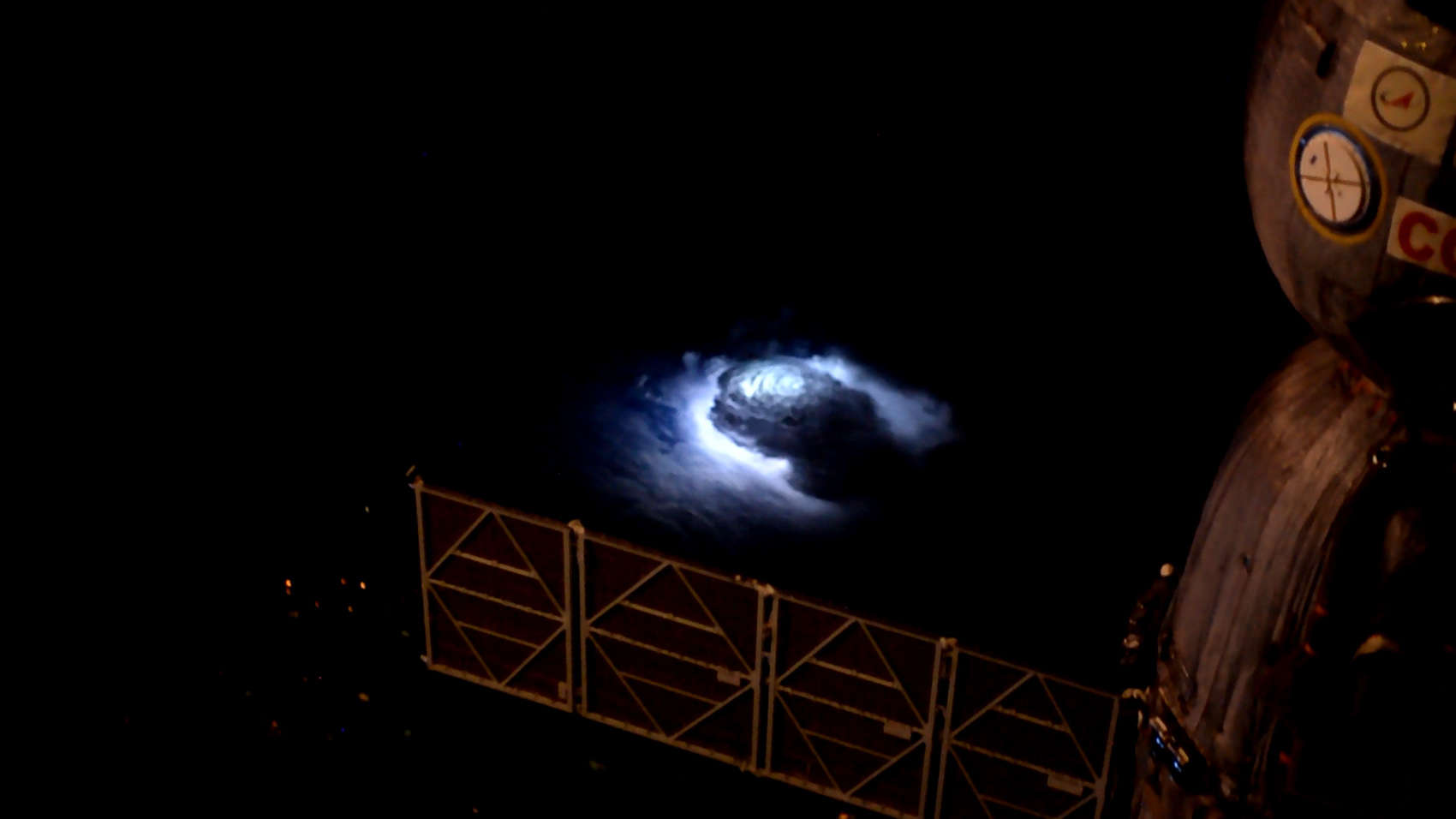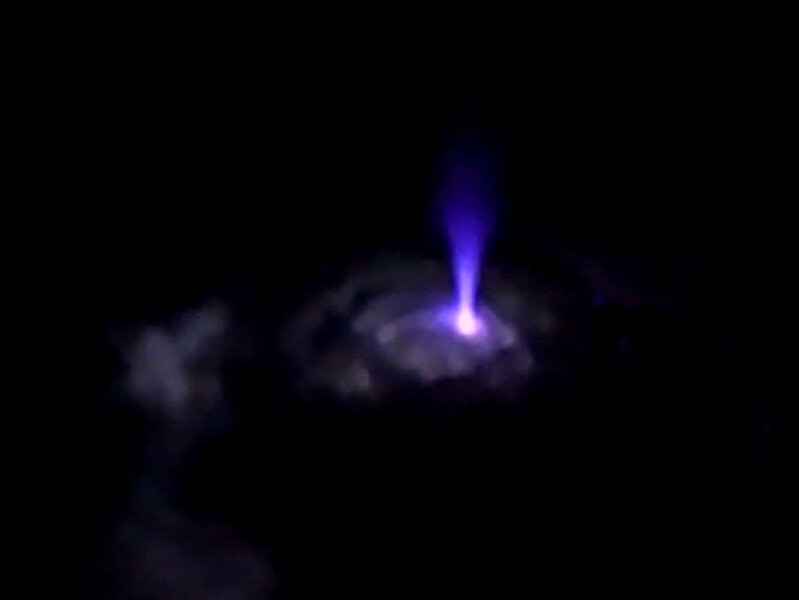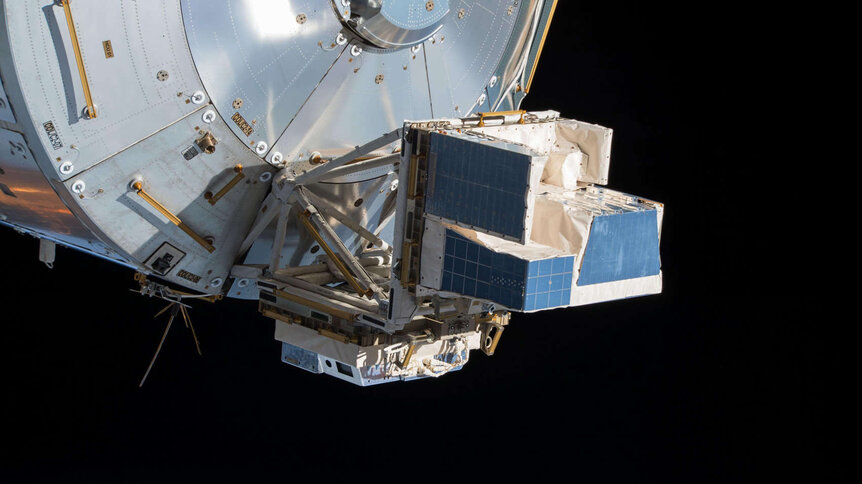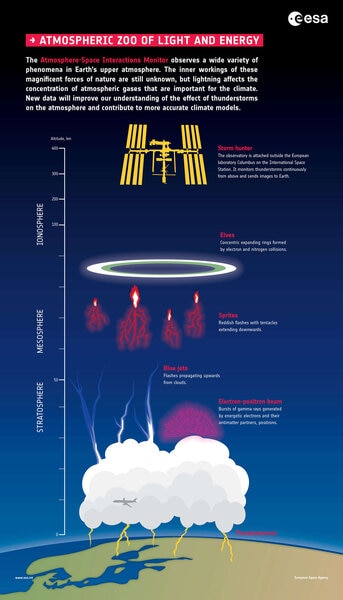Create a free profile to get unlimited access to exclusive videos, sweepstakes, and more!
A blue bolt out of the blue: On the edge of space, lightning leaps *upward*

Chances are, you've seen, heard, or felt a lightning bolt erupt in the sky somewhere near you. After all, there are well over a billion lightning flashes on Earth per year. That's about four dozen per second, somewhere over our planet (sometimes in one spot, where an astronomer with a phonecam can get video).
Thunderstorms are a common feature of our planet, and the electrical fields therein are the root source of the power of lightning. But they also generate other phenomena, too, ones that we're just starting to learn about.
One of the most mysterious of these is a blue flash. As the name says, these are intense, short blasts of blue light that occur near the tops of storm clouds, and last for only ten microseconds (one one-hundred-thousandth of a second). They sometimes trigger blue jets: upward-reaching tendrils that last for perhaps a few tenths of a second. These pulsate with energy as they go from being narrow channels to fanning out into wide cones as they propagate into the stratosphere, 10–20 kilometers above the ground. But we don't know a huge amount about them.
Because they happen above the clouds, it's hard to see them from the Earth's surface. That's why scientists built a device called the Atmosphere–Space Interactions Monitor (or ASIM), which is mounted on the outside of one of the modules on the International Space Station (ISS). It looks to the Earth below, and can take data at 10 microsecond intervals, allowing these weird phenomena to be studied.
On February 26, 2019, a thunderstorm brewed in the South Pacific Ocean near the equator. The ISS passed almost directly over it, giving ASIM an incomparable view. Happily, the storm didn't disappoint: Five blue flashes were seen, including one that generated a blue jet.
The flashes occurred 16 kilometers above the ocean, near the center of the storm where deep convection was seen — this is the rising and falling of air inside the cloud, which is how the strong electric fields inside are generated. These flashes may be from electrons accelerated to high speed inside the cloud slamming into nitrogen molecules in the air, which respond by emitting ultraviolet and blue light.
When this happens, the air becomes ionized — electrons are stripped from the molecules — creating a channel in the air that can conduct electricity. There's a huge charge difference between the top of a cloud and the air above it, and if conditions are just right, that blue flash can create a blue jet, a tremendous but narrow discharge of electricity upwards into the sky (similar to a lightning leader). The one seen by ASIM stretched about 50 kilometers up.
There was also a very faint red pulse at the start of the flash, which may have been the start of the leader, the first ionized channel carved upward, probably a few hundred meters long. This is also due to electrically excited nitrogen gas emitting light as well (the same reason some aurorae are red).
The blue flashes did more than make a blue jet, too: They made ELVES, which stands for — get this — Emission of Light and Very low frequency perturbations due to Electromagnetic pulse Sources. A blue flash strongly accelerates electrons, which in turn generate powerful pulses of radio waves. These pulses move upwards into the ionosphere (80 kilometers or more above Earth's surface) which themselves accelerate electrons there. This creates rapidly expanding rings of blue and ultraviolet light as the pulse propagates horizontally at the bottom of the ionosphere, like a ripple moving away from a rock dropped into a pond.
I know, this is all quite complicated, but that's part of the point. The theory is partly there, but scientists have lacked observations to back them up. These ASIM observations really help.
Mind you, there are lots of other bizarre phenomena generated in clouds you may not have heard of. Terrestrial gamma-ray flashes, for example, are blasts of extremely high-energy photons out of the tops of thunderstorms, generated when electrons in the cloud are accelerated to nearly the speed of light and then interact with molecules of air. Maybe; the details of these flashes also aren't well understood even though they've been studied for decades.
There are also red sprites, which are tendril-like features that flash upwards from the tops of clouds. Pilots had reported seeing them for years but they were never caught in photos, so scientists were perhaps overly skeptical. In the 1990s these faint flashes started turning up in digital images, and now they're understood more or less in general. They're on my bucket list of Things I Want To See For Myself, but it's hard; since they appear over storms you have to be far enough away to see above the storm, and they're faint. We do see enormous storms to our east in the summer, and at some point I'll see about trying for them.
I know I usually write about mysterious objects and phenomena quadrillions of kilometers away, but there's a lot of very cool stuff going on much closer to us. It's not technically astronomy, but hey, it's still over our heads. Unless you're ASIM, looking down on Earth. But that's just a matter of perspective.






























